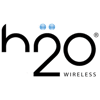
If you have made up your mind to purchase a cell phone signal booster, it is obvious that you want to choose the most appropriate one. But to do it, just your desire is not enough. For choosing a right cell signal repeater model, you need to know the peculiarities of your cell signal and the nature of your cell signal problems. But do not worry, if you do not have such knowledge at the moment. We are here to help you. And to start with, we offer you to read this article which will reveal you some secrets about your cell signal.
In general, what do you know about cell signal? How do you usually characterize it? What factors do you base your evaluations on?
Have you ever heard or maybe pronounced a phrase “Oh no, here I do not have my cell signal”? But how to you define it? An average cellular phone user makes such conclusions based on such an indicator as “bars” that are shown on the screen of his or her cell phone. Yes, we use these bars to see whether the signal is strong enough or not. But you should understand that this indicator does not show us a full picture. From the technical point of view, this indicator is absolutely useless. How many bars do the bar scale on your cell phone screen have? Maybe 4, or 5, or 6? Different phones have different scales. It means that 3 bars that your phone has are not equivalent to 3 bars on another cell phone. This indicator in general is not standardized which means that it can’t give us specific information.
Experts never use these bars as a source of specific information. If they need to evaluate the strength of a cell signal, they use such a special logarithmic unit as decibels. But if you think that only experts have an opportunity to understand the strength of a signal in decibels, you are not right. You also can easily understand a precise power of your signal using a special option that is called Field Test Mode (by the way, nowadays the majorly of cellular phones have this option). Further we will tell you how to use it.
But the strength of your signal is not the only fact that you need to know for choosing the most appropriate booster. You also should clearly understand which type of signal you need to improve. Maybe you know that cell signal can be transmitted at different frequency bands. Though in your daily life you may easily handle without such information, for choosing a cell signal repeater it is important to know the precise frequency band that is utilized by our carrier to send GSM, 3G or 4G/LTE signal to your area. Nevertheless, the above mentioned Field Test Mode Function will help you to find out this information as well.
As you see, you need to learn two vital things about your cell signal: its strength and a frequency band that it is transmitted at. So, one of the first steps on your road to the best choice is finding this important Field Test Mode option on your phone. Let’s do it together. We will provide short instructions for iPhone and Android users.
If you are a user of iPhone, this paragraph is for you.
First of all, let’s define the strength of your signal. iPhones today have a native Field Test Mode app. To use it, you need to fulfill the following steps:
- You need to see the network that you are connected to (it may be, for example, 2G, 3G or 4G network). You need to open
Settings, then chooseWi-Fisection and turn it off. The symbol in the left corner on your screen will help you to see to which cell network you are connected.
If you see no symbol or E, it means that you are connected to 2G network and can make GSM calls.
If you see 3G or 4G symbol, it means that 3G or 4G data exchange is available for you.
For checking 2G or 3G networks signal, LTE signal should be switched off. And it can be done really easily.
You will find such an option in your Cellular Settings menu if you use iOS 9.2 or below, and in Cellular Data Options section, is you are a user of iOS 9.3 and above.
- Your next task is to enable Field Test Mode app.
Using your keypad, dial the following combination: *3001#12345#* and then the Call button should be pressed.
- Now you can easily see the measurement of your signal’s strength in decibels.
In the corner of the screen where you used to see bars, now you will find a negative number (which is an indicator that you have been looking for) as well as the name of your cell services provider and the type of the network that you are connected to.
The following paragraph is targeted at Android users.
As in the first case, it is also an absolutely easy task. Just go to Settings, then to About Phone section. And that’s it. Then there can be two variants depending on the model of you cell phone. The strength in decibels will be shown under Network or Status. Near the numerical strength of signal you will also see the type of the network that now your phone is using. You can also install a separate app to see data about your phone including your signal strength. Such an app can be found in the Google Play.
How to interpret the obtained data
When you receive the information about your signal, you need to interpret it correctly. So, the number that you see is negative, it means: the closer it is to zero, the stronger the signal is. If the indicator is from -79 to -65, it means that you have a rather good signal. If it is -65 or above (closer to zero), it is an evidence of an excellent strength of you signal. But if you see a number -80 or lower, it is a good reason to consider a possibility to install a booster.
Now it’s time to check a frequency band that is used by your cell services provider.
First of all, please, make sure that you have turned off WiFi on your device but, please, switch on 3G/4G data exchange. These simple rules are applicable both for iPhones and Android phones.
If you use iPhone, you need to use you Field Test Mode once again as you have done while checking the strength of your cell signal. Using your keypad, dial *3001#12345#*.
Then if you want to see at which frequency your GSM signal is transmitted choose GSM cell environment option and then you will see your band or UARFCN Number.
If you want to find out the frequency band of your 3G network, you need to choose UMTS option, then follow to UMTS Neighbor Cell Meas. The frequency band can be found in the first line.
And if it is needed to see the frequency band of your 4G/LTE signal, in Field Test Mode you need to click LTE section, then choose LTE Neighbor Cell Meas and there you will see the info that you need.
For Android users we offer the following short guide how to define frequency bands of their cell signals.
Android users need to turn to numeric requests. There are the following combinations depending on the brand of your cell phone.
Dial *#0011# or *#*#197328640#*#* if you use Samsung phone.
*#*#*386#*#* or *#*#*585*0000#*#* if you are a user of Sony phone.
And *#*#7262626#*#* is an appropriate combination if you are an owner of HTC device.
After turning to these requests you will see UARFCN Number or a frequency band number on the screen.
How to use the obtained data
Having received these numbers, you need to define to which frequency band your number corresponds. Thanks to the UARFCN calculator, it will be an absolutely easy task. Just enter the number that was displayed to the calculator and you will see the correspondent frequency band.
Nevertheless, don’t worry, if something has gone wrong and you haven’t manage to interpret the results, we would be happy to help you, just let us know about your troubles.
And now, having obtained all the data needed, you are ready to search for your ideal cell signal booster!
As you may have already noticed, we have a lot of models of these devices to offer you. They can be used for improving different types of signals transmitted by a great number of carriers. Some of our boosters are able to amplify only one type of signal, some others – a combination of signals.
To make the process of choosing the right device easier, we would like to offer you a convenient Search service. But at the same time, please, do not forget, that our specialists are always ready to help you. There is only one thing that you should do in such a case – contact us and we will do our best to solve your cell signal problems as soon as possible.



























